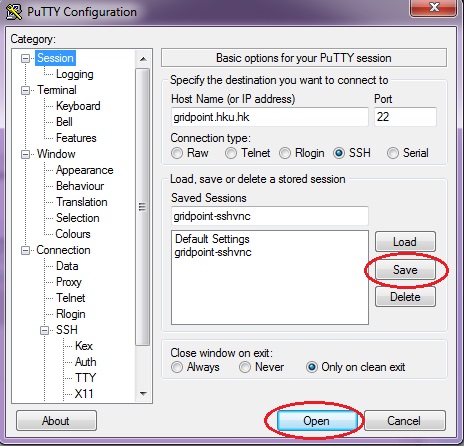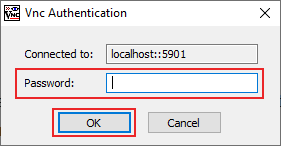
- #Tunnel vnc through ssh how to#
- #Tunnel vnc through ssh install#
- #Tunnel vnc through ssh full#
- #Tunnel vnc through ssh windows 7#
- #Tunnel vnc through ssh windows#
#Tunnel vnc through ssh full#
Note that in the likely reduced resolution and color depth of a VNC window the full desktop will be rather cramped and a look bit odd. Xterm -geometry 80x24+10+10 -ls -title "$VNCDESKTOP Desktop" &Īdd the line indicated below to assure that an xterm is always present, and uncomment the two lines as directed if you wish to run the user's normal desktop window manager in the VNC. The original should appear as follows: # Uncomment the following two lines for normal desktop: To use Larry as an example, first login as larry $ cd. Login to each user and edit the xstartup script. Create xstartup scripts ( You may omit this step for CentOS 6 ) Note: if you omitted the preceding step of logging in as each configured user, and creating their ~/.vnc/ subdirectory, this test will fail.Ģ.5. We also enable the vncserver service to be automatically started.

We will create the xstartup scripts by starting and stopping the vncserver as root. Confirm that the vncserver will start and stop cleanly Switch user into the account for each user, and as noted below, run: vncpasswd This will create the ~/.vnc directory for that userid:Ģ.4. Note: This step is NOT out of sequence, but is placed here so that the next following step will fall adjacent to the step in which failure to perform it, will permit immediate fault diagnosis. Larry will have a 640 by 480 screen, as will Moe.

#Tunnel vnc through ssh install#
If you are a minimalist, or simply testing, however, it is sufficient to have yum install a simple XTERM client: yum install xterm XFCE is more light-weight than Gnome or KDE and available from the "extras" repository. Other popular desktop environments are "KDE" and "XFCE-4.4". You can use the command yum groupinstall "GNOME Desktop Environment" to install the Gnome Desktop and requirements, for example. Make sure to install a window manager in order to get a full-featured GUI desktop. You can use the command: yum install vnc to install the client if: rpm -q vnc shows that it is not already installed. If the server is not installed, install it with the command: yum install vnc-server The result will be either package vnc-server is not installed or something like 4. The server package is called 'vnc-server'.
#Tunnel vnc through ssh how to#
This HOWTO shows you how to configure VNC using the 'vncserver' service as supplied by CentOS. There are several ways to configure the vnc server.
#Tunnel vnc through ssh windows#
Your workstation ( Linux or Windows ) is only displaying a copy of the display ( real or virtual ) that is running on the remote machine. Unlike a remote X connection, the xserver is running on the remote computer, not on your local workstation. VNC is used to display an X windows session running on another computer.

#Tunnel vnc through ssh windows 7#
Steps I took (all from my Windows 7 client) I am trying to tunnel x11vnc through SSH to putty. I am playing with my sexy new Ubuntu 10.04 server


 0 kommentar(er)
0 kommentar(er)
